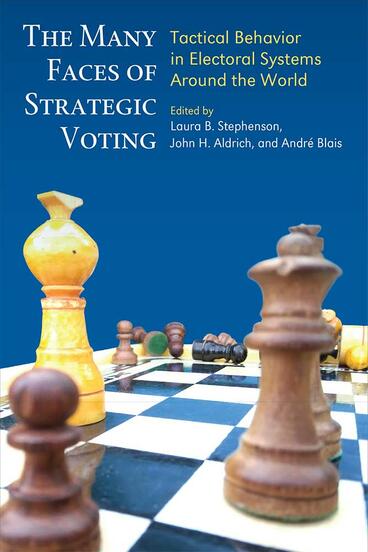The Many Faces of Strategic Voting
Tactical Behavior in Electoral Systems Around the World
When voting against your candidate is in your best interest
Description
Voters do not always choose their preferred candidate on election day. Often they cast their ballots to prevent a particular outcome, as when their own preferred candidate has no hope of winning and they want to prevent another, undesirable candidate’s victory; or, they vote to promote a single-party majority in parliamentary systems, when their own candidate is from a party that has no hope of winning. In their thought-provoking book The Many Faces of Strategic Voting, Laura B. Stephenson, John H. Aldrich, and André Blais first provide a conceptual framework for understanding why people vote strategically, and what the differences are between sincere and strategic voting behaviors. Expert contributors then explore the many facets of strategic voting through case studies in Great Britain, Spain, Canada, Japan, Belgium, Germany, Switzerland, and the European Union.
Laura B. Stephenson is Professor of Political Science at the University of Western Ontario.
John Aldrich is Pfizer-Pratt University Professor of Political Science at Duke University.
André Blais is Professor of Political Science at the Université de Montréal.
Reviews
“This is an excellent book that makes an important contribution to our understanding of voting behavior in a variety of contexts. The volume brings together a diverse set of contributors from around the world to address exciting and controversial questions about what motivates vote choice.”
—Jeffrey Karp, Brunel University London
“The Many Faces of Strategic Voting will undoubtedly be of use for those studying voting behavior in a variety of different electoral contexts. It provides the basis for the development of new wave of comparative research on strategic voting.”
—Nick Vivyan, Durham University

